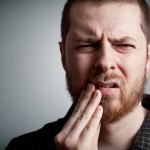
Dentine hypersensitivity is typically a short sharp pain that arises from exposed dentine as a result of a thermal, tactile osmotic chemical or evaporative stimulus that is not attributable to any other dental pathology. The prevalence of dentine hypersensitivity is reported to range from 1.3% to 92.1%.
The aim of this review was to estimate the prevalence of dentine hypersensitivity in various populations.
Methods
Searches were conducted in the Medline/PubMed, Cochrane Library, Wiley Online Library and Web of Science databases with no limitations in date or language. Studies in humans specifically reporting on the prevalence of dentine hypersensitivity were included. Two reviewers independently selected studies, abstracted data and assessed study quality using the Newcastle-Ottawa Scale. Fixed and random-effects meta-analysis were conducted and meta-regression models used to explain the variation of the prevalence measures.
Results
- 65 papers (reporting on 77 studies) involving a total of 97,845 patients were included.
- The average number of patients per study was 700 (range 40-12,692).
- 52 studies (68%) were considered to be at high risk of bias, 17 at moderate risk and 7 at low risk.
- 49 (64%) of studies involved clinical examination.
- A range of stimuli were used to assess hypersensitivity air blast being the most common being used in 45% of studies.
- Prevalence ranged from 1.3% to 92.1%
- Fixed-effect meta-analysis summary prevalence estimate = 11.5% (95%CI: 11.3% – 11.7%.
- Random effects meta-analysis estimate = 33.5% (95%CI: 30.2–36.7)
- Studies involving specialty practice patients [mean prevalence: 61.2% (95%CI: 37.0–85.4)] and specific subgroups of the general population [mean: 43.3% (95%CI: 22.9–63.6)] had higher prevalence than general population [mean: 30.3% (95%CI: 27.0–33.7)] and general practice [mean: 28.1% (95%CI: 25.0–31.1)] studies.
Conclusions
The authors concluded: –
The best estimate of dentine hypersensitivity was 11.5% (95%CI:11.3%–11.7%) and the average from all studies was 33.5% (95%CI: 30.2%–36.7%). The extremely high degree of heterogeneity among studies can only be partially explained by characteristics of the studies.
Comments
This review has used broad inclusion criteria and chosen to include both clinically assessed and self-assessed (using questionnaires) levels of dentine hypersensitivity. While it might be assumed that clinical estimation of hypersensitivity might be more objective interestingly the meta-regression conducted suggested no differences in the among studies when compared by the method of diagnosis (self-reports vs. clinical examination). They also found the type of diagnostic assessment did not account for the variability in the prevalence.
While this review provides an indicative figure for the prevalence of dentine hypersensitivity the authors point out that it would be beneficial if future studies would adhere to reporting standards in the STROBE statement on strengthening the reporting of observational studies in epidemiology
Links
Primary Paper
Livia Favaro Zeola, Paulo Vinícius Soares, Joana Cunha-Cruz, Prevalence of dentin hypersensitivity: Systematic review and meta-analysis, Journal of Dentistry, 2019,ISSN 0300-5712,https://doi.org/10.1016/j.jdent.2018.12.015.
Other references
Dental Elf – Dentine hypersensitivity blogs
